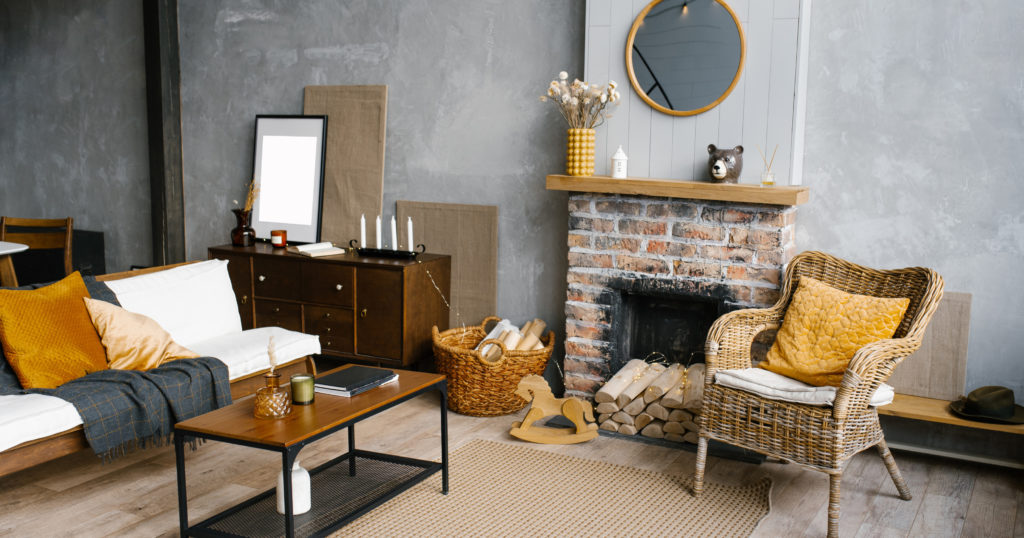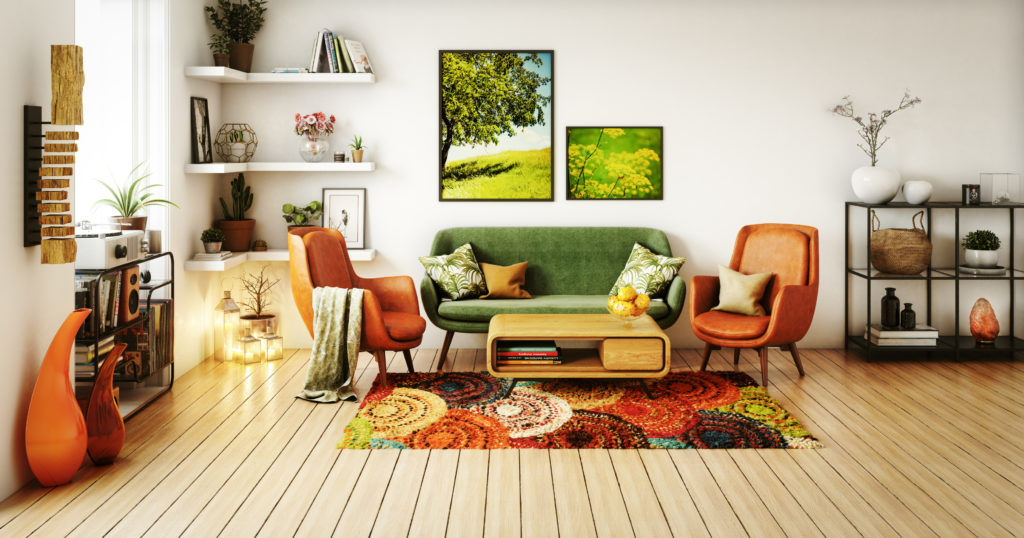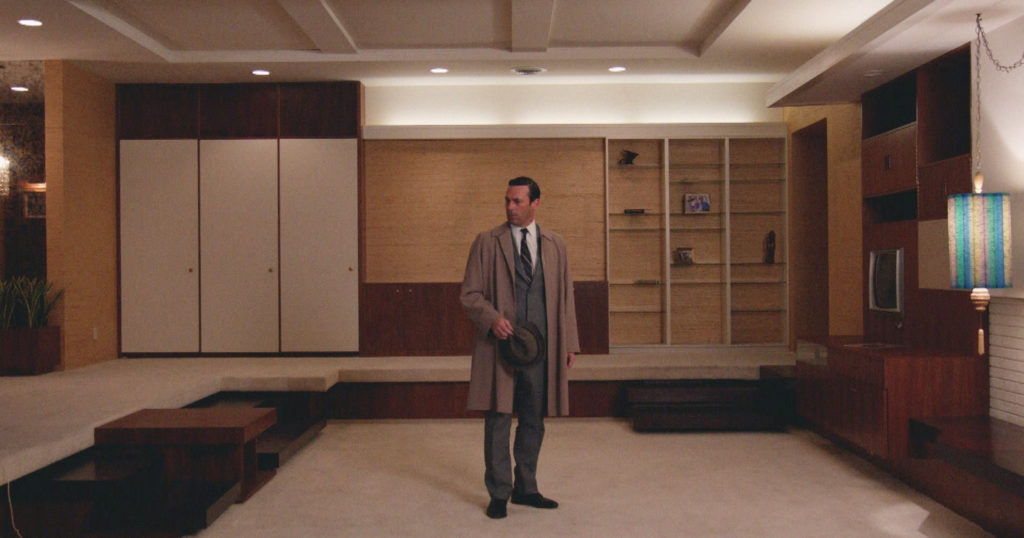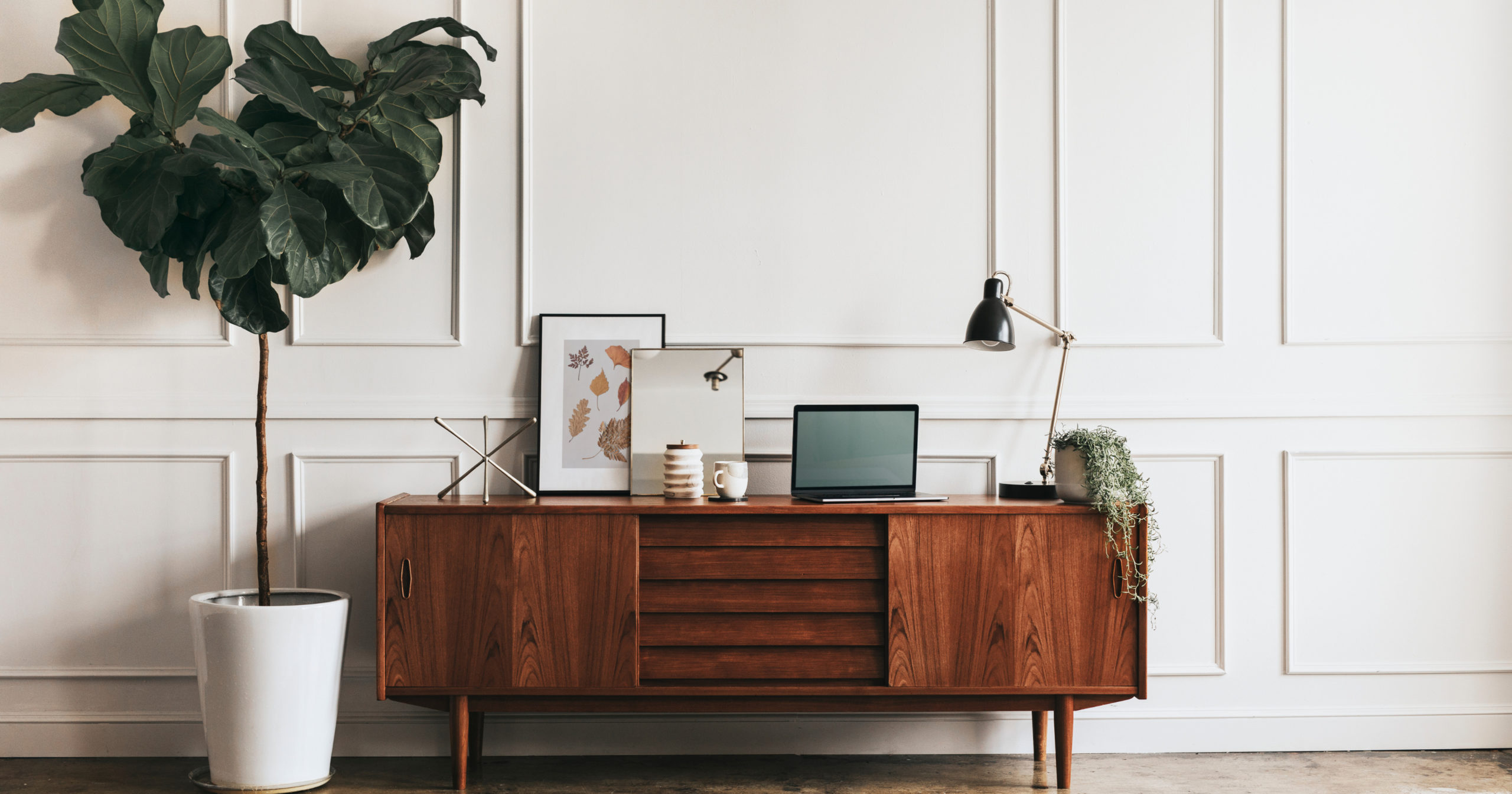Mid-century modern interior design has become one of the most popular and enduring styles in the world of home decor. With its clean lines, organic forms, and timeless appeal, mid-century modern has captured the hearts of design enthusiasts and homeowners alike. But where did this iconic style come from, and how did it become so influential?
We must go back to the early 20th century and the beginning of the Bauhaus movement to comprehend the roots of mid-century modern interior design. The goal of this ground-breaking art school in Germany was to combine art, craft, and technology. The mid-century modern aesthetic that developed in the years that followed was greatly influenced by the school’s guiding principles.
From its original roots, we’ll track the development of the mid-century modern interior design style through the post war years, rise of the American middle class, and the unprecedented cultural phenomenon, Mad Men. We’ll discover fundamental elements of mid-century modern design and how history has shaped them. Also, we’ll dive into the timelessness of this classic aesthetic.
Join us on a journey through the history of mid-century modern interior design, from Bauhaus to Mad Men and beyond.
Bauhaus and the Roots of Mid-Century Modern Interior Design

The mid-century modern interior design style owes much of its origins to the Bauhaus movement, which emerged in Germany in the early 20th century. Founded by architect Walter Gropius, the Bauhaus was a revolutionary art school that sought to merge art, craft, and technology into a cohesive whole. The principles of the Bauhaus heavily influenced mid-century modern design, and it’s hard to overstate their impact on the style.
At its core, Bauhaus design was about creating functional, efficient objects that were both aesthetically pleasing and accessible to the masses. The movement rejected traditional ornamentation and instead focused on clean lines, simple forms, and geometric shapes. Other key principles of Bauhaus design included the use of new materials and manufacturing techniques, as well as the integration of art and technology.
These principles were carried over into mid-century modern interior design, which emerged in the post-war years as a response to the housing needs of the burgeoning American middle class. Mid-century modern interiors were characterized by open floor plans, large windows, and a seamless integration of indoor and outdoor spaces. They also featured clean lines, organic forms, and an emphasis on functionality and simplicity.
Bauhaus-inspired mid-century modern interiors often featured bold, geometric shapes, such as triangular coffee tables and starburst mirrors. The use of new materials, such as fiberglass and molded plastics, was also a hallmark of both the Bauhaus and mid-century modern design. And just as the Bauhaus sought to bring art and technology together, mid-century modern designers often incorporated cutting-edge technologies into their interiors, such as built-in appliances and modular furniture.
Overall, the Bauhaus movement was a critical influence on the mid-century modern interior design style. Its principles of functionality, simplicity, and clean lines continue to shape the aesthetic sensibilities of designers and homeowners today, making it one of the most enduring and iconic styles in the world of home decor.
Mid-Century Modern Interior Design in Post-War America

America experienced enormous growth and transformation following World War II, particularly in the housing sector. There was a large demand for brand-new, reasonably priced homes that were both practical and fashionable due to the baby boom and the rise of the American middle class. Due to this desire, mid-century modern architecture and interior design emerged.
A focus on simplicity, functionality, and a connection to nature were characteristics of mid-century modern architecture and interior design. Using organic materials and forms, architects like Frank Lloyd Wright and Richard Neutra aimed to design homes that blended in with their surroundings. Mid-century modern interiors, which emphasized sleek lines, striking geometric shapes, and a minimalistic approach to decorating, carried over this emphasis on organic design.
Key features of mid-century modern interior design included open floor plans, large windows, and a seamless integration of indoor and outdoor spaces. Furniture was often designed to be modular and multi-functional, allowing homeowners to maximize their living space. Common materials included wood, glass, and metal, and the use of bright colors and bold patterns was also popular.
The incorporation of art in the home was another monumental development for mid-century modern design. The work of contemporary artists was often featured in mid-century modern homes, in the form of abstract expressionist sculptures and paintings. Using art inside of one’s home was a liberating way to express individuality and creativity, and it helped morph the perception of a home into a canvas upon which people could curate a personalized space.
Overall, post-war America’s shifting social and cultural environment prompted the development of mid-century modern interior architecture. It signaled a break with conventional design trends and a shift to a more contemporary, forward-thinking strategy. Mid-century modern architecture is still in demand today because homeowners like its simple lines, practical layout, and connection to nature.
The Cultural Phenomenon of Mad Men

In 2007, the TV show Mad Men burst onto the scene, bringing mid-century modern design back into the mainstream. Set in the 1960s, the show was a visual feast for design lovers, featuring meticulously recreated mid-century modern interiors that became almost as iconic as the show’s characters.
One of the key elements of mid-century modern interiors in Mad Men was the use of color. The show’s set designers made bold choices, using bright hues like orange, green, and yellow to create a vibrant, energetic feel. These colors were often paired with iconic mid-century modern furniture pieces, such as Eames lounge chairs and Saarinen tulip tables.
The usage of patterns was another distinguishing feature of mid-century modern design in Mad Men. Popular selections that added visual appeal and texture to the interiors included geometric shapes, abstract patterns, and strong stripes. The set designers for the performance also used a range of textures to create a layered, tactile sensation, employing materials like leather, wood, and metal.
However, Mad Men’s effect on modern mid-century design extends beyond the production’s sets. The popularity of the program contributed to a resurgence in interest in mid-century modern architecture, motivating both homeowners and interior designers to appreciate the style’s simple lines, practicality, and vintage appeal.
To this day, mid-century modern interior design is as popular as ever, with contemporary designers now adding their own unique touches to the style. Even with fresh color palettes and updated materials and textures, the influence of mid-century modern design is prevalent across a variety of interiors, from sleek, modern condos to cozy retro homes.
In many ways, the continued popularity of mid-century modern design can be traced back to the cultural phenomenon of Mad Men. The show’s celebration of mid-century modern interiors helped to cement the style’s place in the cultural zeitgeist, inspiring a new generation of design enthusiasts to embrace its timeless appeal.
Evolving Elements of Mid-Century Modern Interior Design

Although most people associate mid-century modern design with the 1950s and 60s, this style of interior design has continuously adapted and evolved through the years. Nowadays, designers are adding their own personalized touch to the classic mid-century modern look, which helps create interiors that aren’t just timeless, but also unique with a modern touch.
The different use of materials is one of the most significant ways in which the mid-century modern design style has changed through the years. Traditionally, mid-century modern interiors often incorporated materials such as wood, leather, and metal. Today, contemporary designers are including a broadened range of materials in their spaces, such as glass, concrete and plastic.
Another way that mid-century modern design has evolved is through the use of color. While classic mid-century modern interiors often featured bold, bright hues, contemporary designers are playing with more muted tones and pastels, giving the style a softer, more organic feel.
Quite often, contemporary mid-century modern interiors include a variety of modern and vintage pieces, which adds a sense of depth and timelessness. Designers frequently use classic mid-century modern furniture pieces, like Noguchi coffee tables and Eames lounge chairs, in the same space as modern fixtures and accessories.
Despite these changes, the enduring appeal of mid-century modern design remains. The style’s clean lines, functional design, and timeless appeal continue to capture the imaginations of homeowners and designers alike. Whether it’s a sleek modern apartment or a cozy retro-inspired home, mid-century modern design has proven to be a style that transcends time and trends.
Conclusion
In conclusion, the legacy and rich history of mid-century modern interior design have shaped fashion for decades. Mid-century modern design has made a lasting impression on the field of interior design, from its origins in the Bauhaus movement through its rise as a dominating style in post-World War II America.
Mid-century modern design is prominently characterized by its emphasis on functionality and simplicity. Subsequently, the design style often features clean and uncluttered interiors. Although the design style has changed in many ways over the years, it has remained true to its origins and core principles, which is why it continues to inspire designers and interior enthusiasts.
The lasting appeal of this design is evidenced by the success of shows like Mad Men and the emergence of current mid-century modern interiors. There is no doubting the influence that mid-century modern design has had on the world of interior design, regardless of whether you prefer more contemporary interpretations of the style or traditional mid-century modern rooms.
Mid-century modern architecture ultimately serves as a reminder that good design is about more than just looks. It involves designing areas that are useful, cozy, and inspiring. The legacy of mid-century modern design will endure for years to come even as we continue to experiment with new design trends and aesthetics.
